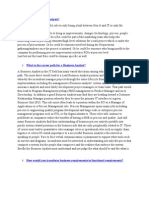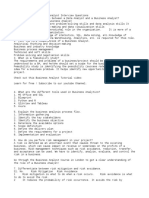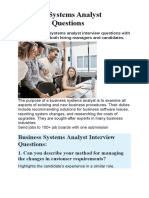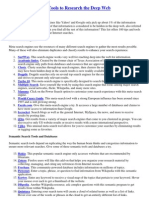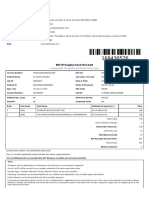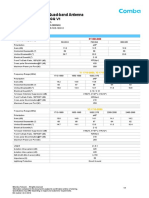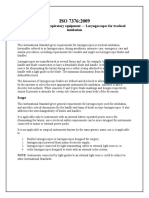0% found this document useful (0 votes)
10 views12 pagesBA Imp Interview Questions
The document outlines the evolving role of a business analyst, emphasizing their importance in bridging IT and business needs, driving growth, and managing change. It also provides a comprehensive list of interview questions categorized by experience level, including general, technical, and scenario-based questions, along with tips for effective interview preparation. Overall, it highlights the critical skills and knowledge required for success in business analysis roles.
Uploaded by
Nitya YsCopyright
© © All Rights Reserved
We take content rights seriously. If you suspect this is your content, claim it here.
Available Formats
Download as DOCX, PDF, TXT or read online on Scribd
0% found this document useful (0 votes)
10 views12 pagesBA Imp Interview Questions
The document outlines the evolving role of a business analyst, emphasizing their importance in bridging IT and business needs, driving growth, and managing change. It also provides a comprehensive list of interview questions categorized by experience level, including general, technical, and scenario-based questions, along with tips for effective interview preparation. Overall, it highlights the critical skills and knowledge required for success in business analysis roles.
Uploaded by
Nitya YsCopyright
© © All Rights Reserved
We take content rights seriously. If you suspect this is your content, claim it here.
Available Formats
Download as DOCX, PDF, TXT or read online on Scribd
/ 12



































